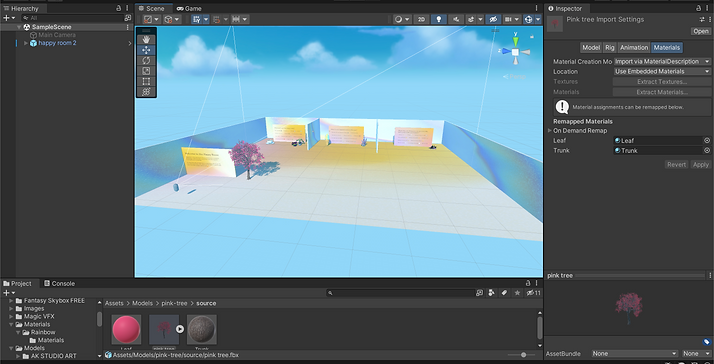House of Emotions
Creating an immersive VR environment to allow people to experience joy, loneliness and anger
IMMERSIVE VR EXPERIENCE

Project overview
Modern life is emotionally stimulating and people have to deal with both personal as well as global stressors. There is also increased isolation that people experience due to lack of being connected to friends and family.
In order to help people manage and cope with their emotions better we came up with the House of Emotions. It is an immersive VR experience that is a safe space to express emotions and get the support that is needed while going through sad emotions and celebrating the positive emotions as well. They can enter these rooms and engage with different functionalities that can help improve their mental cognizance depending on their current mood.

DURATION
4 weeks
TEAM MEMBERS
Shadiya Fairoose, Daniel Meagher
ROLE
Research & Design
TOOLS
Unity, Blender, Figma
From planning to prototyping

We followed a fluid design process and conducted our research, visualized mood boards, created sketches, mapped the user flow and created our prototype.
1. Understanding how emotions are processed
Secondary Research
We studied feelings wheels, articles and research papers to learn what are the coping strategies for dealing with the three emotions.




Primary Research

2. Gathering inspiration
In order to gather inspiration and understand the visual language of emotions we created moodboards.
This allowed us top identify colors, shapes, patterns and gradients that are associated with each emotion.


3. Brainstorming and ideation
Once we had done our research and understood the visual attributes associated with emotions we moved on to sketching. We envisioned how the emotions could be depicted and strategies for processing and expressing how our viewers felt.


4. Mapping the user flows

We created a user flow which would map how people would navigate between the three experiences as well as within each experience.
5. Prototyping the three rooms
We used Blender to create and modify the 3D models. After that we created the VR environment in Unity. We exported everything to an oculus headset and showcased that in our class.


Learnings & Next steps
-
While conducting the research, we learned how important it is to take care of yourself and your mental well-being. It is important to keep a check on your mental health and make sure to seek help when required.
-
Application of emotions in virtual environment and figuring out how to engage users through emotions via house of emotions was a challenge for the team. We hope the users enjoy using the app and helps them feel a little better during their time there.
